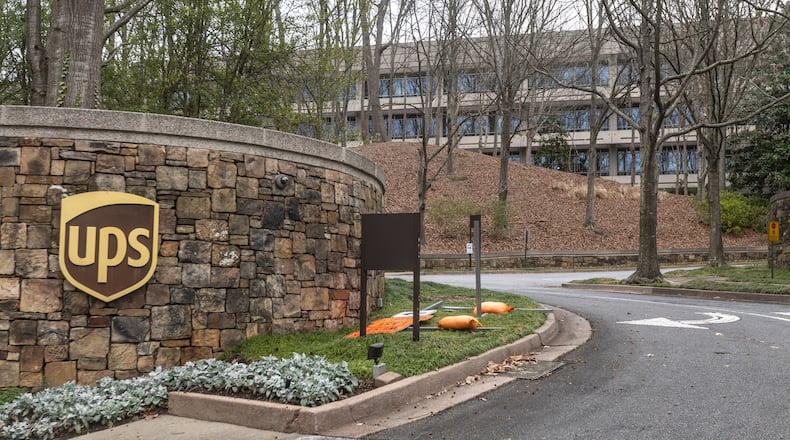Sandy Springs-based UPS reported that its revenue and profit continued to decline in the first quarter, but its CEO sees a recovery to growth in the future.
The shipping giant reported $1.1 billion in net income for the first three months of the year, down 41% from $1.9 billion in the same period of 2023.
It had $21.7 billion in first quarter revenue, down 5.3% from $22.9 billion in the year-ago quarter.
But UPS CEO Carol Tomé said the performance was “in line with our expectations.”
“Looking ahead, we expect to return to volume and revenue growth,” she said in a written statement.
Average daily volume decreased 3.2% in the company’s U.S. domestic segment. But that’s a smaller decline than the 7.4% decrease in the fourth quarter of the year. Tomé said during an investor conference call Tuesday that the rate of decline slowed in the first three months of the year as UPS won new business.
Looking ahead, the company reaffirmed its target for full-year results, aiming for $92 billion to $94.5 billion in revenue.
“We saw pockets of export growth in certain markets,” Tomé said. But the company also saw continued soft demand with companies shifting to cheaper, slower ground shipping.
At the same time, UPS has had an increase in costs with a new labor contract struck last year with the International Brotherhood of Teamsters, which averted a strike. The company’s union wage rates increased 13% in the first quarter.
“We still expect first half earnings to decline and second half earnings to grow, as we lap the first year of the Teamsters contract,” Tomé said.
The declines in revenue and profit in recent quarters prompted UPS earlier this year to announce it would cut its management headcount by 12,000 employees.
The company reduced its operating expenses by 1.4% in the first quarter to $20.1 billion, from nearly $20.4 billion a year earlier.
The company this year is cutting jobs and adding more automation to move packages to reduce costs, improve efficiency and grow in the future.
It said it more than offset increased labor rates by cutting hours, reducing management and support staff by about 5,400 positions year-over-year and other cost savings. It plans to continue reductions in the second quarter.
UPS is closing about 200 of its more than 1,000 facilities around the country, consolidating the volume into facilities that use robotics and RFID tracking in what it calls a “network of the future,” as it laid out at an investor day last month.
The company aims to cut billions in costs over the next five years, and will focus more on areas with promise for high-profit growth including the health care industry and small-and medium-size businesses.
In the health care line of business, Tomé said UPS has opened a new “labport” at its Worldport air hub in Louisville, Kentucky, to deliver urgent packages to lab customers before sunrise, “so they can provide diagnostic results by early morning.”
She said UPS revenue from health care grew to $2.6 billion in the first quarter.
The company also expects growth from its recently-announced contract to handle air cargo for the U.S. Postal Service. Tomé said UPS has “plenty of space on our existing aircraft” for the additional cargo, can use regional gateways to help transport the cargo point-to-point, and would be hiring fewer than 200 pilots.
About the Author
Keep Reading
The Latest
Featured




